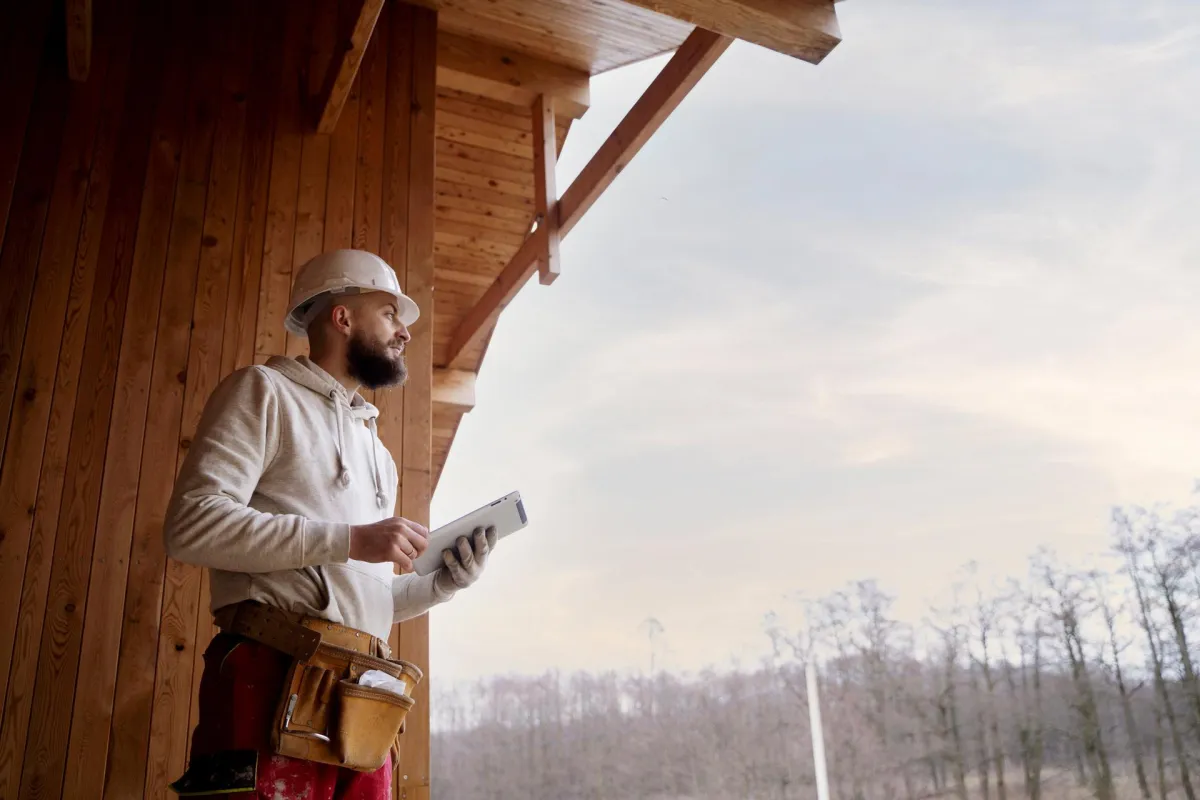Blog

Top Issues We Find in Plainfield Home Inspections During Winter
Introduction
Winter in Plainfield, Illinois brings more than cold air and snow — it also exposes hidden weaknesses in homes that often go unnoticed during other seasons. From frozen pipes to roof leaks, the combination of freezing temperatures, ice, and moisture creates unique inspection challenges and safety risks.
At Smart Choice Home Inspections, we perform hundreds of inspections each year and see recurring cold-weather issues that impact both older and newer homes across Plainfield. This guide breaks down the most common problems we uncover during winter inspections, why they happen, and what homeowners can do to prevent them.
Common Winter Problems Found During Home Inspections
Cold weather affects nearly every part of a home — from the roof down to the foundation. Below are the top issues we regularly identify during winter inspections in the Plainfield area, along with explanations of what causes them and what they can lead to if ignored.
1. Ice Dams and Roof Leaks
When warm air from your attic melts the snow on your roof, it refreezes at the eaves, creating an ice dam. This buildup blocks proper drainage, forcing water under shingles and into the home.
Typical findings:
Stained ceilings or attic sheathing
Damaged shingles and underlayment
Inadequate attic insulation or ventilation
Tip: Proper insulation and ventilation balance roof temperature and prevent snow melt that leads to ice dams.
2. Frozen or Burst Pipes
Uninsulated plumbing in basements, crawl spaces, or exterior walls can freeze and burst during prolonged cold spells. The damage often isn’t discovered until thawing causes leaks.
Typical findings:
Cracked pipes or fittings
Damp walls or flooring near plumbing runs
Inadequate pipe insulation
Tip: Insulate exposed pipes and keep interior temperatures consistent, even in unoccupied homes.
3. HVAC Inefficiencies
Winter tests your heating system’s reliability. During inspections, we often find furnaces that are overdue for service or ductwork that leaks conditioned air.
Typical findings:
Dirty furnace filters restricting airflow
Improperly balanced duct systems
Thermostat inaccuracies
Tip: Schedule annual HVAC maintenance and replace filters every 1–2 months during heavy use.
4. Poor Attic Ventilation and Insulation
Many winter comfort issues begin in the attic. Insufficient insulation or blocked soffit vents trap warm air, leading to condensation, mold, or ice dam formation.
Typical findings:
Condensation stains or mold on rafters
Inconsistent insulation depth
Blocked vents
Tip: Ensure vents are unobstructed and attic insulation meets local R-value standards for Illinois.
5. Moisture Intrusion Around the Foundation
Melting snow and frozen ground create tricky drainage conditions. Poor grading, clogged gutters, or foundation cracks can let water seep into basements.
Typical findings:
Damp or efflorescent basement walls
Frozen downspouts or disconnected gutters
Negative grading near foundation walls
Tip: Clean gutters regularly and ensure soil slopes away from the home to prevent pooling water.
6. Drafty Windows and Doors
Cold drafts not only raise heating bills but can also indicate failed seals or improper installation.
Typical findings:
Condensation between double-pane glass
Loose weather stripping or gaps
Air infiltration detected near thresholds
Tip: Replace worn seals and use thermal curtains or caulking to improve comfort and efficiency.
How to Prepare Your Home for a Winter Inspection
Plainfield homeowners can reduce cold-weather issues by taking a few proactive steps before or during an inspection. Doing so helps the inspector access key areas and ensures a thorough evaluation.
Step 1: Clear Snow and Ice
Make sure pathways, driveways, and outdoor HVAC units are accessible and safe to inspect.
Step 2: Check for Active Leaks or Condensation
Look for any recent signs of moisture near windows, ceilings, or in the basement.
Step 3: Maintain Indoor Temperature
Keep the heat running to prevent frozen pipes and allow inspectors to test HVAC systems effectively.
Step 4: Replace Air Filters and Test Detectors
Clean air filters and test smoke and carbon monoxide detectors before the inspection to confirm safe operation.
Step 5: Document Repairs and Maintenance
If you’ve recently fixed or serviced systems (roof, furnace, insulation), have receipts or documentation ready. This helps confirm preventive work for both you and potential buyers.
Frequently Asked Questions
Do inspectors still check exterior components in freezing temperatures?
Yes. We inspect roofs, siding, and foundations year-round, but may note if snow or ice limits visibility in certain areas.
Can frozen conditions hide problems?
Sometimes. For example, snow cover may hide roof damage, but experienced inspectors recognize indirect warning signs like uneven melt patterns or interior leaks.
Should I get a home inspection if I’m selling during winter?
Absolutely. Winter inspections reveal how well a home performs under harsh conditions, helping sellers address seasonal issues before listing.
What’s the most serious winter issue you see?
Ice dams and frozen pipes top the list because they can lead to costly structural or water damage if not addressed quickly.
Can I prevent all winter inspection problems?
Not entirely, but consistent maintenance — especially insulation, ventilation, and drainage — significantly reduces the risk.
Conclusion
Winter puts homes in Plainfield to the test. From frozen pipes to roof leaks, the cold weather exposes vulnerabilities that can turn into major repair bills if ignored. A thorough inspection by Smart Choice Home Inspections identifies these issues early so you can take action before small problems become big ones.
Whether you’re buying, selling, or maintaining your property, a professional home inspection gives you the insight needed to keep your home safe, efficient, and ready for Illinois winters.
Client Reviews and Testimonials
Our Services
Helpful Links
© 2025 All Rights Reserved | Smart Choice Home Inspections
